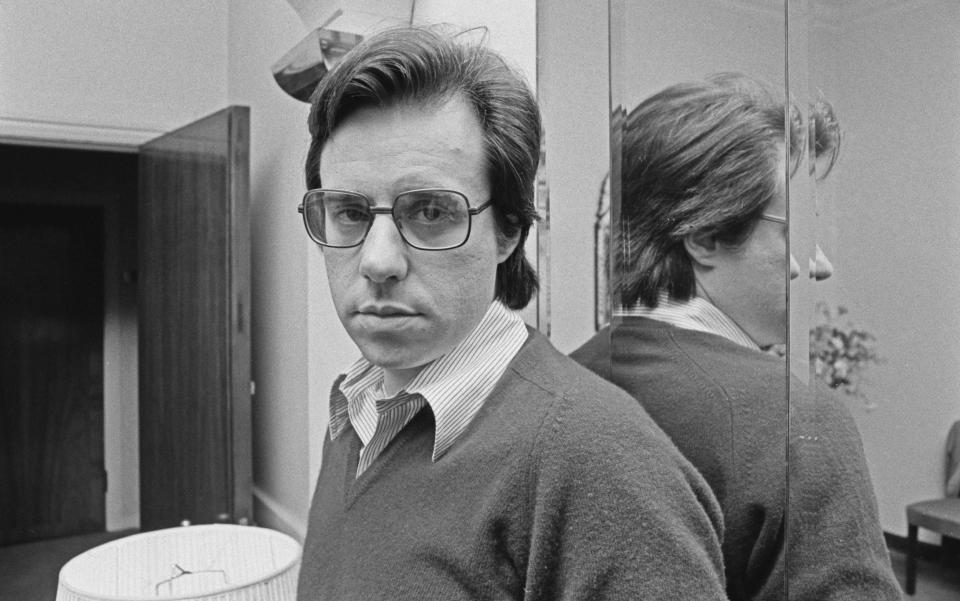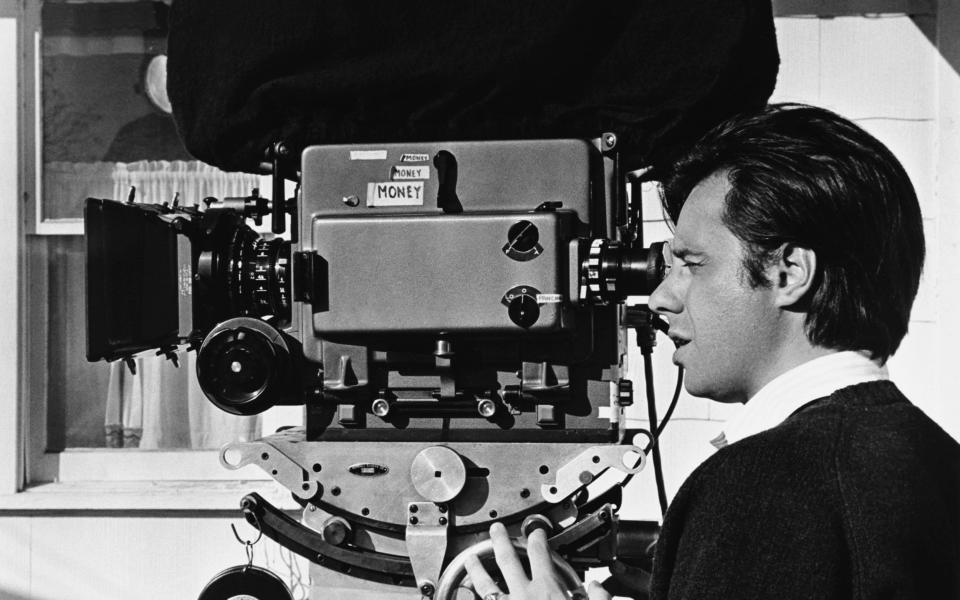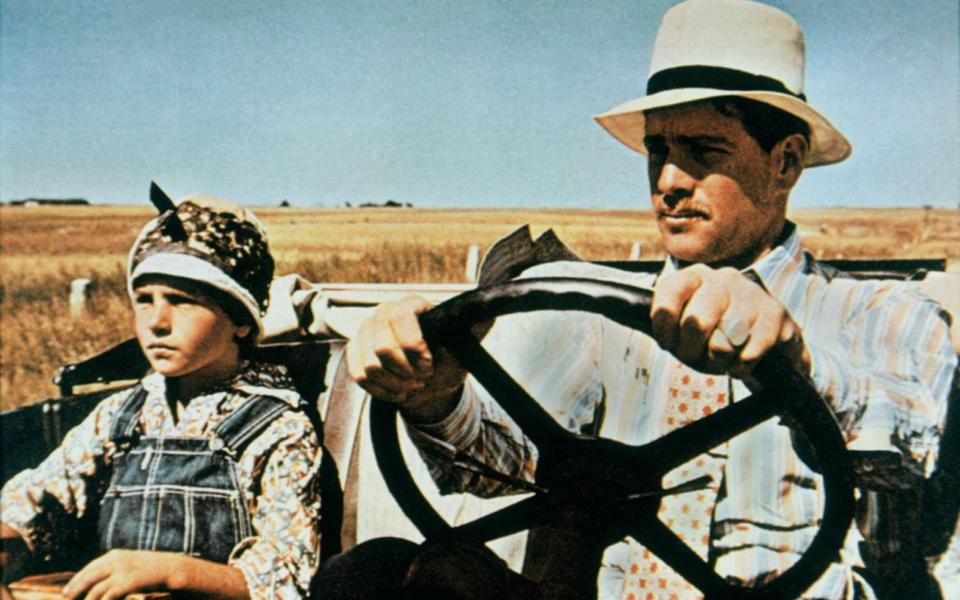Peter Bogdanovich, director and writer best remembered for making the Oscar-winning classic of young love, The Last Picture Show – obituary

Peter Bogdanovich, who has died aged 82, made his name as the director of The Last Picture Show (1971), which saw him hailed as the most impressive American film-maker since Orson Welles; but the dramatic reversals, self-inflicted disasters and outlandish personal tragedies he subsequently endured made even Welles’s chequered career look like plain sailing in comparison.
Bogdanovich regarded himself as a sort of US outpost of the Nouvelle Vague, and like his French counterparts he first established a reputation as a critic before moving into film-making; his pictures were manifestly the work of a New Wave-style cineaste steeped in the history of movies.

Adapted from Larry McMurtry’s novel and evocatively shot in black and white, The Last Picture Show was a superb ensemble piece about teenage love in a small Texas town in the 1950s. It was richly nostalgic, and the numerous allusions to Bogdanovich’s personal pantheon of great films enhanced its emotional impact – which was not always the case with his later work.
Only his second film as director, The Last Picture Show won Bogdanovich extravagant praise – “I can’t recall the last time I felt such an acute sense of loss at the end of a film I wanted to go on and on,” declared The Sunday Telegraph’s critic.
It secured Academy Awards for the previously underrated actors Ben Johnson and Cloris Leachman (spotting untapped potential was one of Bogdanovich’s enduring gifts as a director) and earned nominations for Best Picture, Best Director and Best Adapted Screenplay (which Bogdanovich had co-written with McMurtry).

His wunderkind status was rapidly cemented with two further critical and commercial hits. What’s Up, Doc? (1972), a homage to the screwball farces of the 1930s, made, against expectation, a brilliant comic pairing of Ryan O’Neal and Barbra Streisand, while Paper Moon the next year was a more melancholy comedy with O’Neal and his daughter Tatum as con artists in Depression-era Kansas; it netted Tatum O’Neal an Oscar at the age of 10.
Thereafter, however, his career descended into disaster. The seeds were sown during the making of his greatest triumph, The Last Picture Show, when he became infatuated with one of its leading ladies, Cybill Shepherd, a blonde former model.

Wresting the actress’s affections from her co-star Jeff Bridges, Bogdanovich left his wife, Polly Platt, who had been the production designer on the film and was his key artistic collaborator, as well as a stabilising influence more generally .
He then attempted to foist his new partner on the public in a series of aborted or disastrous projects, and scuttled his reputation. “Old time producers,” remarked one critic of Cybill Shepherd’s efforts to sing and dance in At Long Last Love (1975), “had the sense to cast the girl, not the couch.”
An essentially insecure personality, Bogdanovich often came across as abrasive, smug and self-important, and his fall from grace was widely welcomed. “It isn’t true that Hollywood is a bitter place, divided by hatred, greed and jealousy,” said Billy Wilder. “All it takes to bring the community together is a flop by Peter Bogdanovich.”

He began to be more notable for the films he inspired than those he made. His pretensions were mercilessly guyed by Robert Klein in the comedy Hooper (1978), while Charles Shyer’s Irreconcilable Differences (1984) blatantly drew on the saga of his private life: playing a self-centred film-maker, Ryan O’Neal even went so far as to sport Bogdanovich’s ever-present horn-rimmed glasses and neckerchief. Meanwhile Bob Fosse’s Star 80 (1983) dramatised the murder in 1980 of Bogdanovich’s then girlfriend, the Playboy model Dorothy Stratten.
But the more he was cold-shouldered, the more Bogdanovich bolstered himself by playing the role of successful insider. He insisted on living ostentatiously, buying Hollywood palaces he could not afford and amassing a mountain of debt to hotels, florists and chauffeur services. He was twice declared bankrupt, the second time in 1997, when he summarised his life as a “sham”.
Nevertheless, he was greatly admired by some younger directors, and when he was on his uppers Quentin Tarantino gave him house-room – fittingly, since Bogdanovich had extended the same kindness to Orson Welles in the 1970s.

The 21st century saw his reputation rehabilitated, however, with a run of decent films and documentaries. Having started his working life as a stage actor, he also acted in Tarantino’s Kill Bill films, and gained a new following when The Sopranos creator David Chase cast him as Dr Elliot Kupferberg, therapist to Tony Soprano’s psychiatrist Dr Jennifer Melfi (Lorraine Bracco) who struggles to keep in check his fascination with Dr Melfi’s exotic client.
Bogdanovich was increasingly recognised, too, as an outstanding film historian – “if he had never made any movies in the whole of his life he would still be one of the important modern writers on film,” said Clive James – and as the chief keeper of the flame for his heroes Welles, Hitchcock, Howard Hawks and John Ford.
Reflecting on Bogdanovich’s private life, the critic David Thomson, a close friend, admitted that “not even a friend could argue that Bogdanovich emerged unsullied”. Even so, Thomson observed, “he remains one of the best directors in America – if he can find the proper material and budgets – and a man persistently devoted to films and their world.”
Peter Bogdanovich was born in Kingston, New York, on July 30 1939, a few months after his parents had arrived there as immigrants. His father, Borislav, had given up a successful career as a painter in Serbia because of the necessity of getting his wife Herma, an Austrian Jew, out of Europe.

The young Peter found the atmosphere of the family home sad and oppressive – he eventually discovered that his parents were guiltily mourning a son who had died in a domestic accident before he was born – but he bonded with his father over trips to watch silent movies at the Museum of Modern Art (MoMa).
From the age of six he spent every possible moment in the cinema, and created a vast card-index covering each film he had seen, amassing some 5,000 cards by the time he was 30.
At the Collegiate School in Manhattan he proved no scholar, and at 16 enrolled at Stella Adler’s Theater Studio. After three years as a middlingly successful actor, he persuaded Clifford Odets to let him direct an off-Broadway production of The Big Knife, which delighted critics.
He directed other plays with mixed success, and began to write about films for Esquire – the articles were collected in Pieces of Time (1973) – as well as monographs on the great directors for MoMa, also curating seasons of their work there.
In 1962 he married Polly Platt, then a theatre designer, who thought him “arrogant, pompous but also gifted and charming”. They moved to California, where the B-movie king Roger Corman, an admirer of Bogdanovich’s film criticism, gave him a job as a second unit director.
With much practical help from his wife, Bogdanovich did well enough for Corman to entrust him with a budget of $125,000 for his directorial debut, the random-sniper thriller Targets (1968). Audacious from the start, Bogdanovich, wanting a close-up of Boris Karloff looking wistful, told the aged and emphysema-stricken star to contemplate his imminent death.
Targets, The Last Picture Show, What’s Up, Doc? and Paper Moon constituted a phenomenal run for a tyro director, but the critics united in derision when he cast Cybill Shepherd as Henry James’s heroine in Daisy Miller (1974), and again when Shepherd and Burt Reynolds starred in the hugely expensive Cole Porter musical At Long Last Love – “sung by the tone deaf, danced by the afflicted,” observed the Chicago Tribune. Nickelodeon (1976), a period comedy about the early years of cinema, fared even worse with both critics and public.
Saint Jack (1979), from Paul Theroux’s novel about an American pimp in Singapore, redeemed Bogdanovich in the eyes of many critics. But his enthusiastic experiments with the local prostitutes came to the attention of Cybill Shepherd, and their relationship ended.
By the time he made the comedy They All Laughed (1981), starring Audrey Hepburn, Bogdanovich was in a relationship with Dorothy Stratten, 20 years his junior, whom he had met on one of his frequent visits to his friend Hugh Hefner’s Playboy Mansion. He gave her a prominent role in the film, but before it was released she was raped and murdered by her estranged husband, who then killed himself.
When the film played badly with test audiences the studio withdrew it, prompting the grief-stricken Bogdanovich to expend huge sums on buying the rights and distributing it himself, marketing it as a tribute to a talent cruelly cut off too soon: the box office proved mediocre.

His next film, Mask (1985), drew an excellent performance from Cher as the defiant mother of a facially disfigured boy, but Bogdanovich compounded his financial troubles by launching an ill-advised (and ultimately abandoned) lawsuit against Universal Studios for changing one of the songs on the soundtrack against his wishes.
Meanwhile he published a memoir, The Killing of the Unicorn (1984), in which he blamed his former friend Hefner for miring Dorothy Stratten in a sleazy milieu which, he argued, ultimately led to her death. With the zeal of a convert he spent years denouncing Hefner’s Playboy.
In 1985 Hefner told the press that Bogdanovich had found “a pathological replacement for Dorothy” in her younger sister Louise and had embarked on a sexual relationship with her when she was 13. Bogdanovich, who paid for the girl’s education, denied the allegations – and Louise sued Hefner for making them – but the pair married in 1988, when Louise was 20.
When he paid for her to undergo surgery for a malformed jaw, detractors claimed that, in an echo of Vertigo, he had arranged to have her emerge looking more like her sister. He insisted there was nothing odd about the relationship, telling Esquire: “Somebody dies violently and then the person – her lover – marries the sister – that’s not so unusual. You’ve heard the expression ‘are there any more at home like you?’ ”
In 1990 he reunited the cast of The Last Picture Show for a sequel, Texasville – it flopped badly, although Bogdanovich blamed re-editing by the studio. Noises Off (1992), an adaptation of Michael Frayn’s stage farce starring Michael Caine, had its passionate admirers but was generally coolly received. The Thing Called Love (1993) was overshadowed by the death of its young star River Phoenix from a drug overdose before its release.
Bankrupted again, Bogdanovich settled for the less risky life of a jobbing television director. He also published three, much-praised, anthologies of interviews: with Welles (This Is Orson Welles, 1992), with leading directors (Who the Devil Made It, 1997), and with actors (Who the Hell’s In It, 2004).
There were, moreover, two final films, judged by many critics to be his best since the 1970s. The Cat’s Meow (2001) probed the mysterious death of the film mogul Thomas Ince aboard William Randolph Hearst’s yacht in 1924; it showed what AO Scott of The New York Times called his “mastery… with the actors”, bringing out fine performances from Kirsten Dunst as the actress Marion Davies and Eddie Izzard as Charlie Chaplin.

It’s Funny That Way (2014) was a comedy with Owen Wilson as a director who funds sex workers to start new lives – as Bogdanovich claimed to have done in Singapore while making Saint Jack. “It’s a hysterical screwball fantasia that openly steals from Lubitsch, Hawks, Capra and Sturges and wants to be caught with its fingers in the till,” enthused the Telegraph’s Robbie Collin.
Bogdanovich also made affectionate documentaries on the singer Tom Petty (Runnin’ Down a Dream, 2007) and Buster Keaton (The Great Buster, 2018). His last great achievement was to complete the editing of The Other Side of the Wind, which Welles had filmed in the 1970s but been forced to abandon, and in which Bogdanovich had played a Wellesian director’s young protégé.
In 2001 Bogdanovich was divorced from his wife Louise, but latterly they lived together with her mother in New York. From his marriage to Polly Platt he had two daughters.
Peter Bogdanovich, born July 30 1939, died January 6 2022
w

 Yahoo News
Yahoo News 